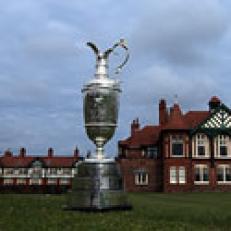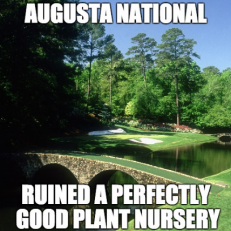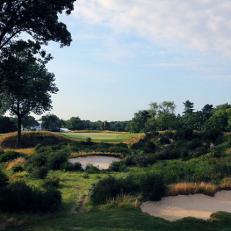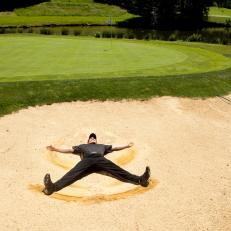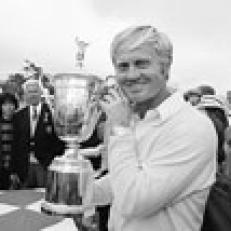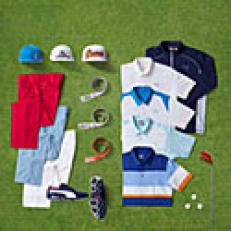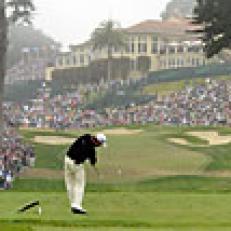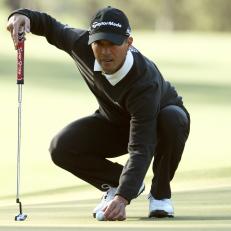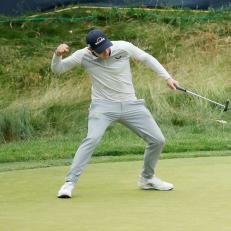Little-Known U.S. Open Facts
The first U.S. Open was a bit less significant than it is today -- it was actually pushed back one month because of a scheduling conflict with the America's Cup yacht race. Held on October 4th, 1895 at Newport Golf Club (left), a nine-hole course, it featured a field of 10 professionals and one amateur who contended for the title over 36 holes in one day. Horace Rawlins would go on to shoot 91 and 82 to win the first Open at the age of 21.
After 79 years, Ken Venturi's infamous win in withering heat at Congressional in 1964 was the last Open to be decided with 36 holes on a Saturday. That's still over 30 U.S. Opens more than those played with the current Sat/Sunday schedule
There were 16 consecutive international champions from the U.S. Open's inception in 1895 to 1910, until John McDermott (pictured) became the first American winner -- and youngest champion ever -- at the age of 19 in 1911. There have only been 16 international winners total since then, including six of the past eight Open champions.
The 1912 U.S. Open, held at the Country Club of Buffalo, was the first and only Open course to feature a par 6. En route to his second consecutive U.S. Open win, John McDermott would play the 606-yard 10th hole at six-under par for the tournament.
Oakmont Country Club in Pittsburgh, Penn., has been the site of more U.S. Opens than any other course. The 2007 Open was the eighth time it was held there, and it will be the site of the 2016 U.S. Open. If you include other professional majors, plus the U.S. Amateur, Oakmont has also hosted more majors than any other U.S. course -- eight U.S. Opens, five U.S Amateurs, three PGA Championships, and two U.S. Women's Opens.
The worst single hole score in a U.S. Open belongs to Ray Ainsley in 1938. It started when he hit his ball into the creek on the par-4 16th at Cherry Hills C.C. He kept swinging while his ball floated down the stream, and by the time his ball was safely in the hole, he had posted a whopping 19.
Iowa club pro Jack Fleck used Ben Hogan's signature putter (personally delivered to him by the club's namesake) to defeat Hogan in a playoff at the 1955 Open at Olympic Club; one of the greatest upsets in golf history. NBC had actually signed off of its one-hour coverage by announcing that Ben Hogan had won his fifth U.S. Open title, which would have been a record. But Fleck birdied 18 to force a playoff, and then defeated Hogan 69-72 the next day to complete the monumental upset.
Photo By: Getty Images
As the story goes, on the last hole of the last round of the 1969 Open, a marshal yelled at Orville Moody to "get behind the ropes," thinking he was a spectator. Moody was actually leading the tournament and would go on to capture his only PGA Tour win.
Photo By: Getty Images
The 1974 Open played host to "The Massacre at Winged Foot," which led to one of the most famous U.S. Open quotes of all time. With a struggling field (no one would break par, champion Hale Irwin finished seven-over 287), USGA Competition Committee chairman Sandy Tatum (pictured) was forced to defend the course set-up, to which he uttered the iconic phrase: "We're not trying to humiliate the best players in the world, we're simply trying to identify them." Probably the most-used and most-accurate summary of U.S. Open play.
Photo By: Getty Images
The 2005 Open was the first year international participants could qualify without coming to the United States, via tournaments held in England and Japan. That year's champion -- Michael Campbell -- was one of nine players to qualify from that inaugural England site.
Everyone remembers that Arnold Palmer drove the par-4 first green in the final round of the 1960 Open at Cherry Hills (and made birdie), but not everyone remembers that in trying to do so in the previous three rounds, he played the hole one-over par for the four rounds, going double bogey-birdie-bogey-birdie.
The addition of the "Hinkle Tree" on the 8th fairway at Iverness Club in 1979 is the only major course redesign to happen during competitive play at the Open. It was inserted after the first round because Lon Hinkle used a gap in the trees to play the 17th fairway into the par-five eighth hole for a birdie, prompting others -- notably his playing partner Chi Chi Rodriguez -- to follow suit. There is some discrepancy in how much it cost however; most accounts say Dr. Bob Yoder (Iverness' greens chairman) paid $500 for the tree, though in an interview with Golf Digest, David Fay says he was asked to pay $120 for the tree. Incidentally, 1979 was Fay's first year working the U.S. Open as executive director of the USGA.

